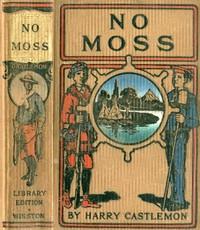Read this ebook for free! No credit card needed, absolutely nothing to pay.
Words: 100225 in 32 pages
This is an ebook sharing website. You can read the uploaded ebooks for free here. No credit cards needed, nothing to pay. If you want to own a digital copy of the ebook, or want to read offline with your favorite ebook-reader, then you can choose to buy and download the ebook.
BIBLIOGRAPHY 351-354
INDEX 355-364
PREFACE
Our knowledge of the present and past fauna of Europe is as yet insufficient to indicate with precision the original homes of its component elements, but I hope that the lines of research laid down here, and the method of treatment adopted, will aid zoologists and geologists in collecting materials for a more comprehensive study of the history of our animals. I trust also that a fresh impulse will be given by the publication of this book to the study of the Geographical Distribution of Species. Collectors of Beetles, Butterflies, Shells, and Fossils may derive some useful hints by its perusal and thus direct their studies, so as to add, by accuracy in observation, to our knowledge of the former geographical revolutions which have moulded our islands and continents. To geographers, a survey of some of the more important changes in the distribution of land and water in past times--based upon the composition of our fauna--will be interesting. The subject, however, is a complex one. I have ventured to indicate a suitable method of treatment, and as such this attempt to elucidate the history of the European fauna should be received.
To Sir William Flower, Mr. Lydekker, Professor Sars, and Professor Smitt, I am especially indebted for allowing me to reproduce drawings from their works, and to my friend Mr. Welch for some beautiful photographs. The Council of the Royal Irish Academy also kindly gave me permission to reprint the maps used in illustration of my paper. Professor Haddon first suggested my writing this book, and gave me many useful hints; and great assistance was rendered me by my colleague, Mr. G. H. Carpenter, in revising the proofs. To both of these kind friends I desire to acknowledge my deep sense of gratitude.
R. F. SCHARFF.
THE HISTORY OF THE EUROPEAN FAUNA.
INTRODUCTION.
Every student of natural history, whether he be interested in birds, butterflies, or shells, contributes his share of facts which help to show how the fauna of his country has originated. The capture of a Swallow-tail or of a Marbled White Butterfly in England at once furnishes material for reflection as to the reason of its absence from Scotland and Ireland. Why should the Nightingale allow its beautiful song to be heard in England, and never stray across the Channel to the sister isle or cross the borders of North Britain? Lovers of bird-life and sportsmen, who have observed the habits of the Ptarmigan in the wild mountain recesses of Scotland, are aware that nowhere else in the British Islands do we meet with this interesting member of the grouse family, and many no doubt have allowed their minds to dwell upon the causes of its singularly local distribution.
All these animals have a wide range in other parts of the world. In past times, before man began to make observations on the geographical distribution of birds and butterflies, or even before the appearance of man in Northern Europe, they may have lived all over the British Islands. For some reason or other they are perhaps dying out or withdrawing towards their original home, which may either be northward, or to the east or south. If we had some clue as to their former history from fossil evidence--or, in other words, if their remains had been preserved to us in geological deposits,--we should have less difficulty in deciding this problem. But butterflies are scarcely ever preserved in a fossil state, and birds very rarely. We know little or nothing, therefore, of their past history from direct evidence, and are obliged to trust to indirect methods of research which will be indicated later on.
Mammals and Snails tell us their story more plainly. The bones of the former and the shells of snails are easily preserved, and thus furnish us with the necessary data as to their past history, for we find them abundantly in most of the recent geological deposits. Among the mammals of the British Islands there are some instances of distribution which much resemble those I have quoted. Thus the Arctic Hare is in the British Islands confined to Ireland and to the mountains of Scotland; and if it were not for the fact that its bones have been discovered in a cave in the south-west of England, we should perhaps never have known that, formerly, it must have inhabited that country as well. Of other mammals we possess fossil and also historical evidence of their having once lived in these islands. Such are the Wolf and the Wild Boar, both of which were abundant in Great Britain and Ireland. The latter is a distinctly southern species. We assume this, because its remains have never been found in high northern latitudes; nor does it now occur in Northern Europe or Northern Asia, whilst all its nearest relatives live in sub-tropical or tropical climates. The Arctic Hare, on the contrary, has probably come to us from the north. Its remains are unknown even in Southern Europe, and the more we approach the Arctic Regions, the more abundant it becomes. Thus we have here two instances of British mammals, one of which, the Wild Boar, has died out--as it were in a southerly direction; whilst the other, the Arctic Hare, is apparently retreating towards the north.
There are also some British mammals of which we have no fossil history, at least of which no remains have as yet been found in these islands. Such a one is the Harvest Mouse . It has a somewhat restricted range in England, and only just crosses the Scottish border in the east. From the rest of Scotland and from the whole of Ireland it is absent. To judge from this distribution, in connection with the fact of its being unknown as a British fossil species, it is probably a late immigrant to England, and has not had time to spread, throughout Scotland at any rate. But it is also absent from Scandinavia, from the Spanish peninsula, from almost the whole of Italy and the Alps, as also from the Mediterranean Islands, whilst the little mouse occurs abundantly right across Siberia. We shall learn more about centres of dispersion later on; meanwhile I should mention that such a distribution indicates that the Harvest Mouse has most likely originated in the east, and has spread from there westward in recent geological times.
Free books android app tbrJar TBR JAR Read Free books online gutenberg
More posts by @FreeBooks

: La fee triunfante en quatro autos Celebrados en Mallorca por el Santo Oficio de la Inquisición en que han salido ochenta y ocho reos y de treinta y siete relajados sólo hubo tres pertinaces. by Garau Francisco - Inquisition Spain Majorca


: No Moss; Or The Career of a Rolling Stone by Castlemon Harry - Conduct of life Juvenile fiction; Children Conduct of life Juvenile fiction; Islands Juvenile fiction; Adventure stories; Yachts Juvenile fiction; Young men Juvenile fiction; Newport (R.I.) Juv








